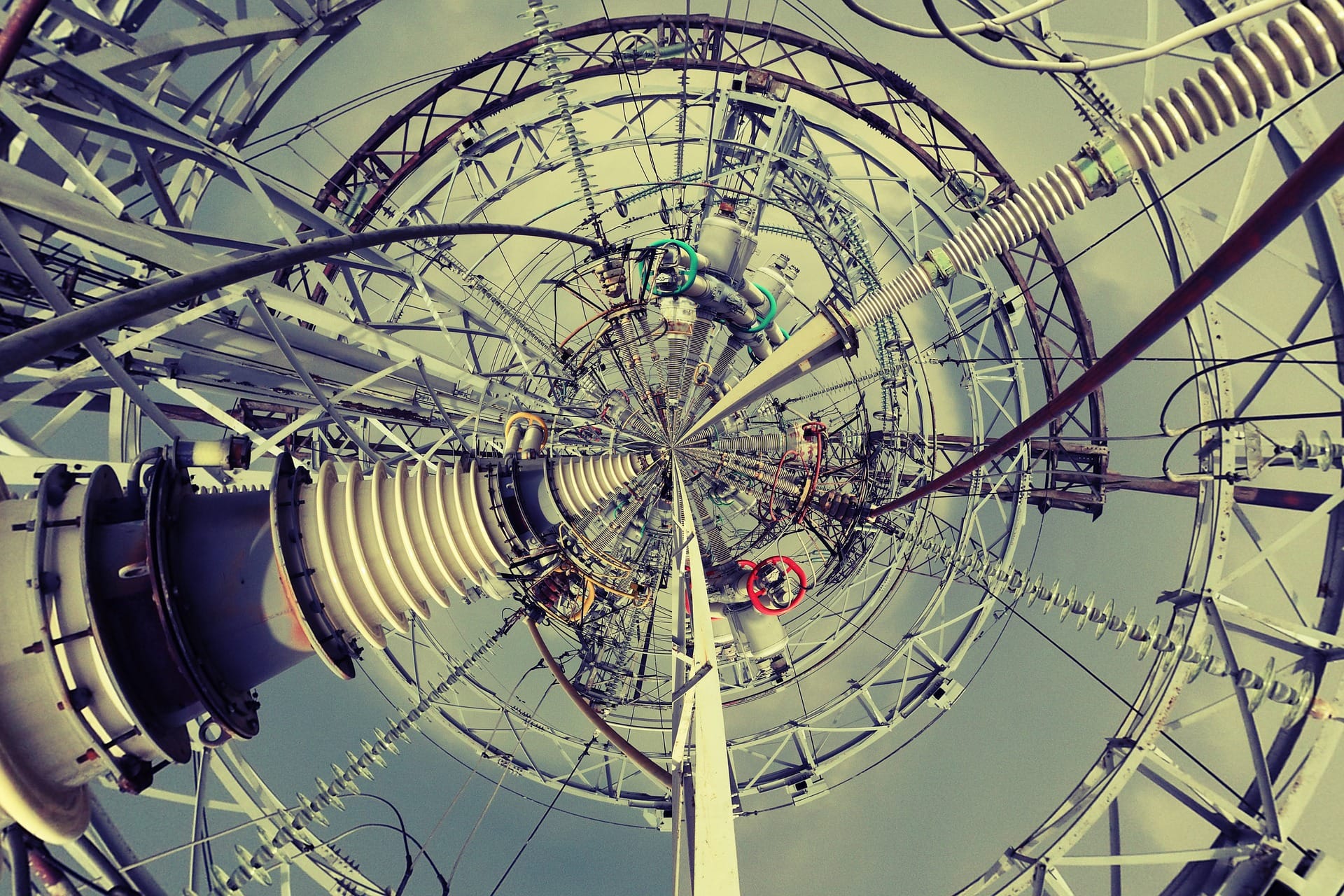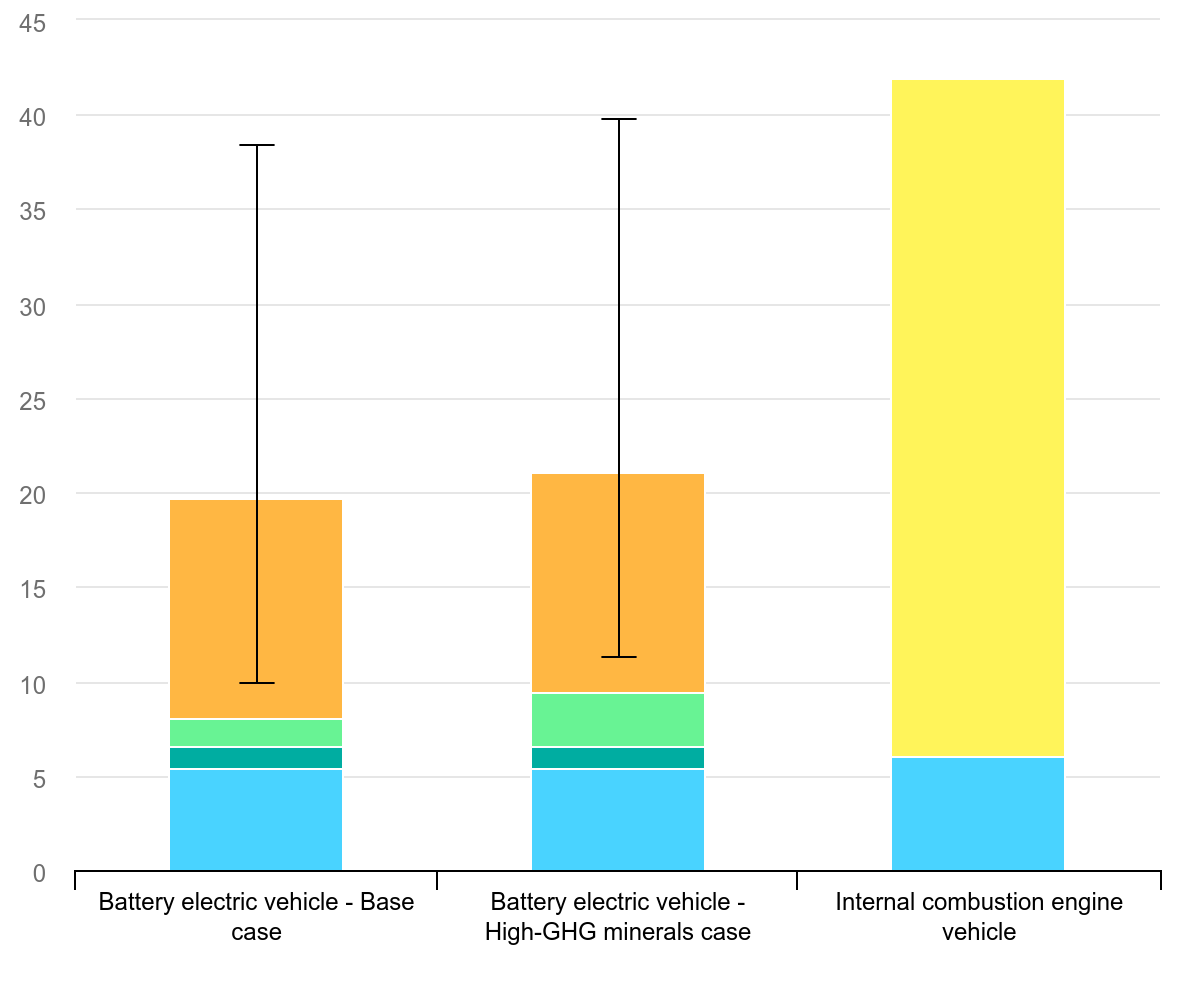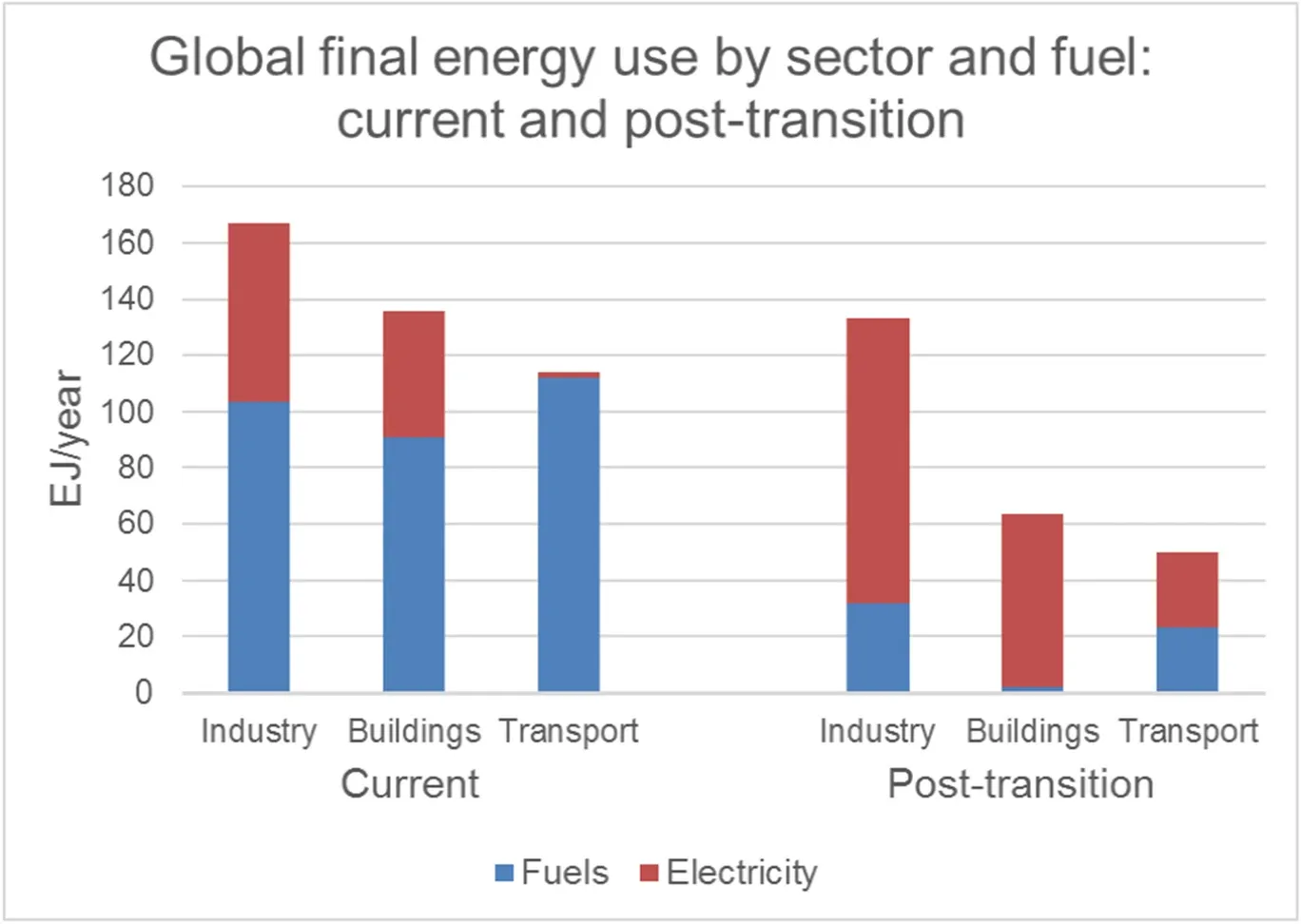Efficiency Gains via Electrification, or Why We Should Electrify Everything We Can
Decarbonizing the economy by electrifying everything in it will mean we need less total energy.

Various forms of media, both traditional and social, are filled with misinformation, disinformation, and malinformation1 around the impact of battery electric vehicles (BEVs). The general thrust of these pieces is to suggest that the environmental impact of manufacturing the batteries used in BEVs means that BEVs have more impact than the internal combustion engine (ICE) powered vehicles they replace. While it is true that the initial energy, materials and embodied carbon investment is often higher for BEVs due to their large battery packs, one common shortcoming of most of these articles and posts is that they fail to acknowledge that the operational impact of burning fossil is far greater over the total life cycle of the vehicle, often by a factor of two or more.2

IEA 2021; Comparative life-cycle greenhouse gas emissions of a mid-size BEV and ICE vehicle, https://www.iea.org/data-and-statistics/charts/comparative-life-cycle-greenhouse-gas-emissions-of-a-mid-size-bev-and-ice-vehicle, License: CC BY 4.0
These very large operational impacts are a direct result of the inefficiency inherent in using heat engines to convert the chemical energy of fossil fuels to useful motive power, rather than using electricity directly. BEVs vs ICEs are just one common example of efficiency gains to be had from electrification of useful work.
We have frequently found that many people do not understand the principle of efficiency very well. Let’s look a little closer at what efficiency really is and how it comes into play when producing useful work from various forms of energy. Simply put, efficiency is the amount of useful work output you get out of a given amount of energy input. Or, looking at it from an end-use perspective, if you have a given amount of work to do, how much primary energy do you need to get it done?
The first law of thermodynamics tells us that no energy is actually lost in any conversion, but it may not all produce useful work. The second law of thermodynamics tells us that the amount of useful work obtained from any energy conversion will always be less than the energy put in to the conversion process. Early in the 19th century, French engineer Sadi Carnot first described how these laws apply to the thermodynamic cycles of heat-to-work devices, such as steam engines, and realized that their maximum efficiency is limited by the differences in temperature between the heat source and heat sink. That theoretical efficiency is an ideal number, unattainable in reality. The detailed application of the Carnot cycle to specific devices, which takes into account real-world losses, is further described by various named thermodynamic cycles such as the Otto cycle for gasoline engines, the Diesel cycle for compression-ignition engines, or the Rankine cycle for steam turbines.
Turning back to the specific example of our ICE-powered vehicle, the limitations imposed by thermodynamics, and by materials that engines are built from, mean that most vehicles, on average, convert less than 20% of their chemical energy to useful work – the remaining 80% gets turned into wasted heat.3
By contrast, when converting electrical energy directly to mechanical energy (electric motors), different rules apply. Electric motors do have resistance losses, friction and windage losses, and core losses, but these are typically low. With careful design and the right materials, electric motors can convert 95% of the electrical energy to useful work.4 Batteries also don’t return all the electrical energy that are put into them, but typical Li-Ion batteries used in BEVs have an average in-out efficiency, when new, of about 90% in typical conditions, although that number degrades with use over time.5
Electrification also provides greater efficiency in energy transfer devices, like heat pumps. Heat pumps use electrical energy (compressors driven by electric motors) to transfer the same form of energy from one place to another. The efficiency of heat pumps can, paradoxically, appear to be greater than 100%. An air-to-air heat pump can deliver 3-10 times more heat energy than would be obtained than by using the electricity directly for heat. There is no free lunch, though. What the heat pump actually does is upgrade the low-quality (low temperature) heat that is present in the outside air to higher quality (higher temperature) heat that we find useful in our homes and buildings.6 Think of the higher temperature heat as a wall you want to get the top of. The lower temperature heat is like a bunch of rocks lying around. They are not useful in that state, but do some work to pile them up high enough and you can get over the wall. That’s what a heat pump does.
Covering all the possible cases where systems and processes can be electrified is beyond the scope of this article, but some generalizations are possible. As we have seen, efficiency gains in transport are comparatively large, with light vehicles, buses, and rail being easier than heavy vehicles, ships, and especially aviation. Buildings can be readily 100% electrified. Heavy industries, particularly some high-temperature processes like steel-making (watch for future articles on this topic) are harder.7

Eyre, Nick. “From Using Heat to Using Work: Reconceptualising the Zero Carbon Energy Transition.”
These generalizations are inferred from data in a 2021 study8 that looked at the impact of electrification of the entire energy system. The study found that efficiency gains from electrification of nearly everything would result in a 40% reduction in final energy demand. That’s worth repeating because of its implications – 40% less overall energy demand means that while the world would have to build more electrical generation and storage capacity (preferably renewable) to replace fossil fuels, it would not have to build renewable electricity generating and storage capacity that is equivalent to the existing capacity of the fossil fuel system.
This conclusion of course assumes that there are no novel uses for electricity beyond electrifying what we have already have. That will almost certainly not be true in future. The most obvious example is the rise of artificial intelligence (AI), which seems to be embedded in nearly everything now. It is very likely that more AI will increase our overall energy demand, but if the sources are renewable electricity, that demand will be less than if the power is from fossil fuel generation.
Reading
- Princeton Public Library. “Misinformation, Disinformation & Malinformation: A Guide.” Accessed May 23, 2025. https://princetonlibrary.org/guides/misinformation-disinformation-malinformation-a-guide/.
- IEA. “Comparative Life-Cycle Greenhouse Gas Emissions of a Mid-Size BEV and ICE Vehicle – Charts – Data & Statistics.” Accessed May 25, 2025. https://www.iea.org/data-and-statistics/charts/comparative-life-cycle-greenhouse-gas-emissions-of-a-mid-size-bev-and-ice-vehicle.
- Radovic, Ljubisa R. Energy and Fuels in Society. McGraw-Hill, 1992.
- Electro Mechanical Energy Conversion, Indian Institute of Technology Patna, accessed 26 May 2025. https://www.iitp.ac.in/~siva/2022/ee280/Electro_Mechanical_Energy_Conversion.pdf,
- Energy, Amigo. “V Range and Efficiency: From Electric Cars to Batteries.” Amigo Energy (blog), October 1, 2024. https://amigoenergy.com/blog/v-range-and-efficiency-from-electric-cars-to-batteries/.
- Radovic, op. cit.
- Ritchie, Hannah. “Electrification Is Efficiency: The World Will Need Less Energy after the Energy Transition,” May 6, 2025. https://www.sustainabilitybynumbers.com/p/electrification-energy-efficiency.
- Eyre, Nick. “From Using Heat to Using Work: Reconceptualising the Zero Carbon Energy Transition.” Energy Efficiency 14, no. 7 (September 27, 2021): 77. https://doi.org/10.1007/s12053-021-09982-9.